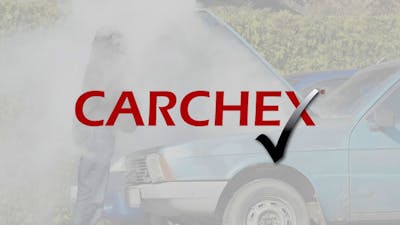Spotlight On Subaru: How Subaru Went From Obscurity to a Leader in Rugged Crossover SUVs
Subaru, once one of America’s smallest manufacturers in the automotive market, created a vehicle style that has now become the standard template for crossovers from many larger brands. Car Talk always loves an underdog, and in the automotive world, there are few underdog stories as great as Subaru’s.
Popular Warranty Providers
Subaru’s U.S. Sales History
Subaru began in America in the late 1960s. Over the coming two decades Subaru’s American sales grew to reach an annual volume of just under 200,000 units. However, from 1986 to 1995, sales steadily dropped back to under 100,000 units annually.
In 1996, Subaru launched a new model, the Legacy Outback and the company’s sales leapt by over 20% in its first year. Subaru saw double digit gains year over year for the next three years. By 2019, the year before the pandemic spoiled all the fun in the auto industry, Subaru’s sales had increased seven-fold compared to the year before the Outback’s introduction.
What Did Subaru Do Differently?
What Subaru did is not complicated. The company created tough wagons with a bit more ground clearance and included standard all-wheel drive. These simple changes to the standard front-wheel drive sedan formula made Subarus so much better in snow than their competitors. The improvement is almost unfathomable. It turned out that Subarus are also great when the pavement ends. Pair these real-world advantages with a few marketing campaigns showing Subbies jumping off small berms and blasting through streams, and the hook was set for many future consumers.
Did Subaru Invent the Adventure Crossover SUV?
No single automaker can lay claim to being the first to invent an off-roading offering. Certainly, Jeep and its Wrangler set the bar for decades in the American market. Still, the type of rugged performance that a fully-equipped Jeep Wrangler offers comes with comfort and fuel economy compromises many Americans don’t want to accept in a daily driver. Not to mention the last three Jeep Wranglers we tested had price tags around $70K.
The Inception of the Outback
AMC first had the idea to put a car body on a 4X4, which raised some eyebrows but didn’t invite many copycats. It was the mid-90s Subaru Outback that succeeded in convincing many folks that what they needed in their life was about nine inches between them and the ground, all-wheel drive that never shut off, and some tough-looking plastic bits along the nose, flanks, and front of their car. We’re making light of Subaru’s original formula, but that was pretty much the list of what made the cars meaningfully different from Hondas, Toyotas, and Nissans, all of which were outselling Subaru by an extra digit or two.
Once the Outback’s success became clear, Subaru quickly added the Forester to the line in an effort to capture as many crossover SUV shoppers as possible. The slightly smaller Crosstrek became the third in the trio of huge successes the company has experienced. Each of these three vehicles, along with the three-row Ascent, has its own personality, but each also stuck closely to the same basic formula. Shoppers lined up, and Subaru moved to the front of the largest vehicle sales segment in America.
The Subaru product has continuously improved over the decades since the introduction of the first Outback. These days, Subaru often earns praise from companies conducting reliability and customer satisfaction surveys.
Subaru Dealers Taking A Leap of Faith
A few years ago, Subaru dealers were among the first in the industry to see that the company’s formula, while great, could be taken to a higher level. It was Subaru’s dealers that first started to add lift kits, all-terrain tires, cargo platforms on the roof, ladders to climb up to said platforms, and a lot of the details one thinks of when reminiscing about classic Range Rovers. Subaru’s dealers deserve part of the credit for pushing the brand to create more targeted off-road trims.
Subaru’s Wilderness Editions
The success demonstrated by Subaru’s dealers led Subaru to introduce the Wilderness Edition Outback and Forester. These trims took an already extremely capable vehicle “to eleven,” as fans of This Is Spinal Tap will understand. The Wilderness editions add even more clearance, underbody protection, all-terrain tires, a full-size spare tire, and a few other bits to snag consumers who already buy into the Subaru philosophy but wanted a more extreme version from the factory.
Although we credit Subaru’s Wilderness Editions with being the trailblazers here, the trim line is really analogous to the Rubicon version of the Wrangler. Subaru just had the vision to see that crossovers were ideal for taking to another level, not just body-on-frame SUVs.
Now Toyota’s RAV4 has Adventure, TRD, and Woodland Edition trims. Mazda’s CX-50 has its Meridian Edition, Honda’s Passport has its Trailsport trim, Jeep’s Cherokee has a Trailhawk Edition, and Ford’s Bronco Sport has its Badlands trim. Each is a crossover made more capable by adding some light off-roading capability. Customers can’t get enough of these “harder-edge” crossover SUVs.
Practical Technology
As good as all of these special trims are, Dual X Mode is the reason that Subaru still leads the pack in terms of capability based on our real-world testing on trails, snow, and dirt roads. Dual X Mode can help in many real situations, such as fording deep snow and managing steep, slippery downhill descents. Competitors add hill descent control, GOAT modes, snow modes, and off-road drive modes in an attempt to keep pace. Everyone respects the Subaru formula, and both shoppers and automakers know that Subaru is the benchmark against which all other rugged crossovers will be judged.
Not Just Mall Crawlers
Proof that owners actually use the capabilities of the Subarus they buy is not hard to find. Look in any ski area parking lot. It is not unusual to find Subarus with black steel rims, studded winter tires, and mud and salt on their roofs.
Subarus are also easy to spot at trailheads; many are outfitted with roof racks for mountain bikes, kayaks, and other adventure gear.
Or, to see how many shoppers value the brand in wintery areas, simply pull into any rural New England Dunkin Donuts parking lot and marvel at the rows of Foresters, Crosstreks, and Outbacks. Often parked among the Jeep Wranglers.
Subaru’s Identity Lead To Its Success
Although Subaru offers sedan, hatchback, and coupe models, it is the success of its rugged and capable crossover SUVs that has been the source of the company’s sales success. By focusing on “what makes a Subaru a Subaru,” the brand has emerged as a leader in an important vehicle segment where excellence is all but demanded.
Read more on the topic of Owning a Car here. Read more on the topic of Subaru Extended Warranty here. Read more on the Best Tires for Subaru Forester here. Read more on the Best Tires for Subaru Outback here.













